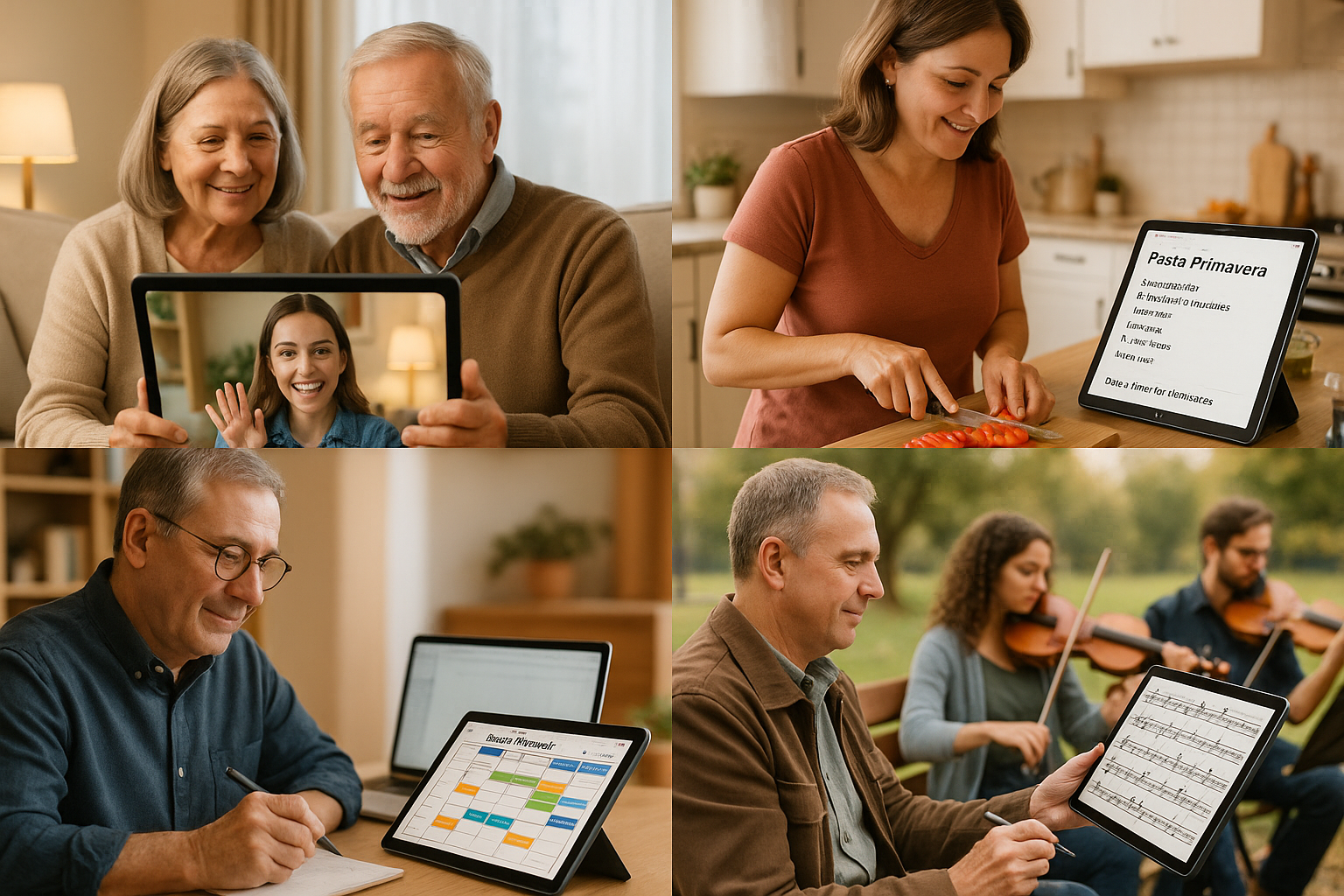Why We’re Falling in Love with Large-Screen Tablets

Each morning, for more and more of us, the first thing we see isn’t our phone, but the tablet on the nightstand—displaying our schedule, the weather, and waiting messages. This small daily ritual hints at a bigger, quieter shift: the tablet, especially the large-screen tablet, is steadily becoming the center of our digital lives.
From “Occasional” to “Essential”
Remember your first tablet? It felt like a bigger version of your phone—great for videos and web browsing, but not much more. But something changed.
Without us even noticing, it took on bigger roles. In the morning, it’s in the kitchen streaming the news while displaying a recipe. During the day, it becomes a digital notebook for meetings. In the evening, it’s a canvas for a child’s drawings or our go-to screen for a movie. This evolution in purpose is exactly why screen size has started to matter so much.
What Does a Larger Screen Really Offer?
-
Effortless Viewing
This is the most immediate benefit. Whether you’re reading, browsing, or watching, a larger screen simply means less pinching, zooming, and scrolling. Your eyes relax as they take in more information at a glance.
-
Getting More Done, Side-by-Side
A big screen makes multitasking not just possible, but practical. You can have your notes open next to a research paper, or compare two documents side-by-side. This level of efficiency is hard to replicate on a smaller device.
-
Designed for Sharing
When the family gathers to watch a video or look through photos, a large screen naturally becomes the focal point. It turns digital content back into a shared experience—a modern hearth for the home.
-
For Creation, Not Just Consumption
With advanced styluses and keyboards, the tablet is shedding its “consumption-only” image. A larger screen provides a genuine digital canvas—whether you’re sketching, writing, or composing music, it gives your ideas the space they need.
Why Now?
Technology has finally caught up to the vision. Large-screen devices are now thin, light, and have all-day battery life. More importantly, the software and app ecosystem has matured. The old joke of “bought for productivity, used for Netflix” is no longer entirely true—today’s tablets genuinely do both.
One Size Doesn’t Fit All
The “perfect” screen size is deeply personal. An 11-inch model might be the sweet spot for someone who’s always on the go, while another person may find a 14-inch screen is the minimum for their workflow. It all comes down to your life: Is it primarily in a bag or on a desk? Is it for entertainment, or for your next big project?
What’s Next?
With foldable and flexible screens on the horizon, we might soon have the best of both worlds: a device that’s compact when carried, but expansive when opened. One thing is certain: the desire for a larger screen is, at its heart, a desire for a more comfortable, capable, and efficient digital experience.
In an age of information overload, the right screen acts like a perfectly sized window—it gives us access to the world while letting us stay comfortable and focused. Perhaps that’s the real reason behind the rise of the large-screen tablet: it has found the sweet spot between digital convenience and human comfort.